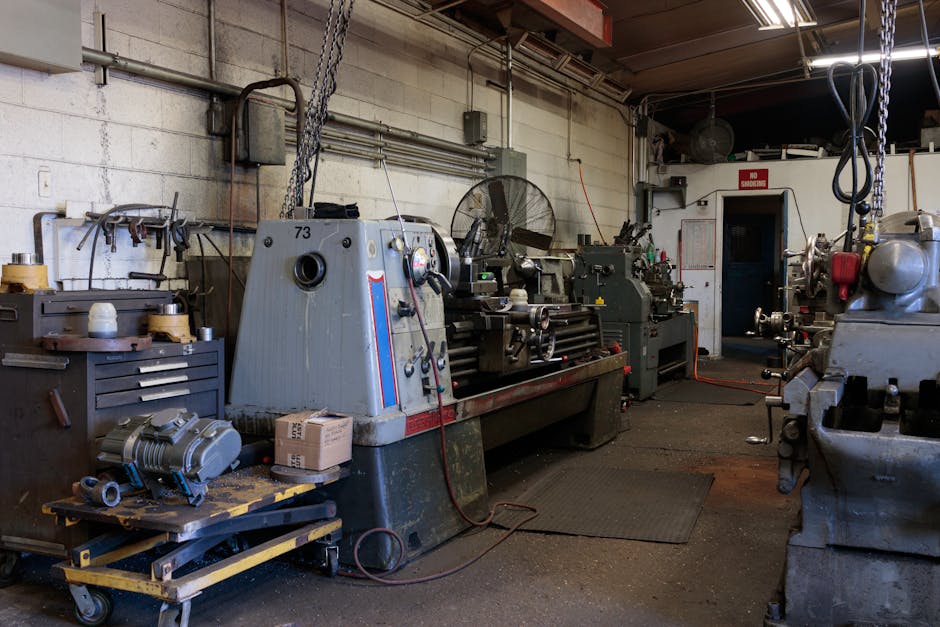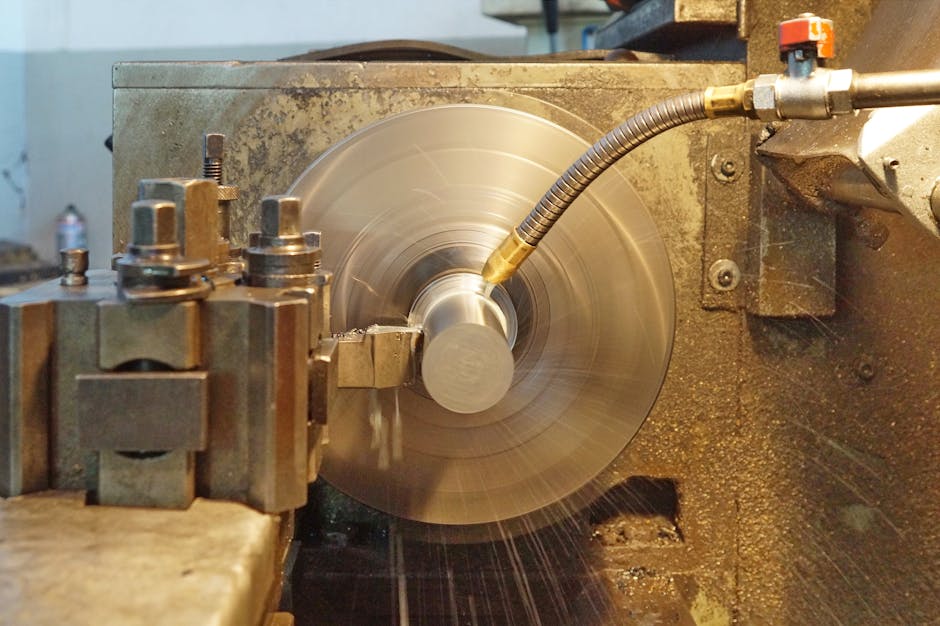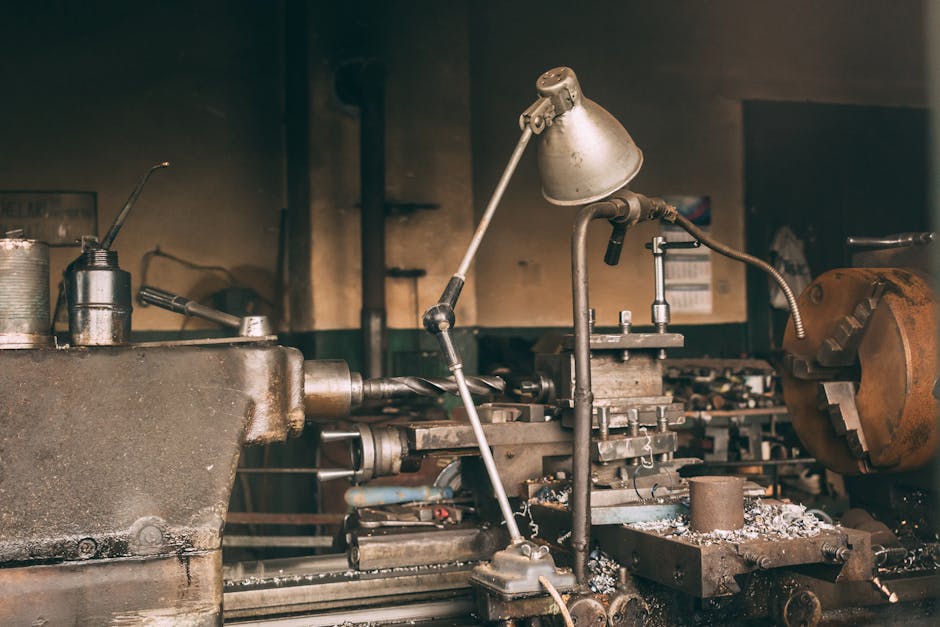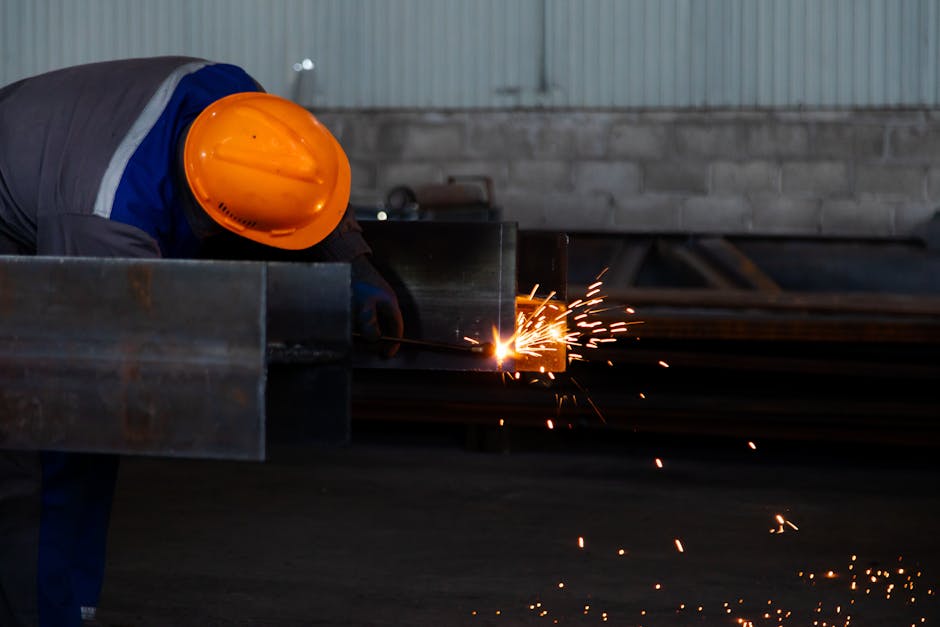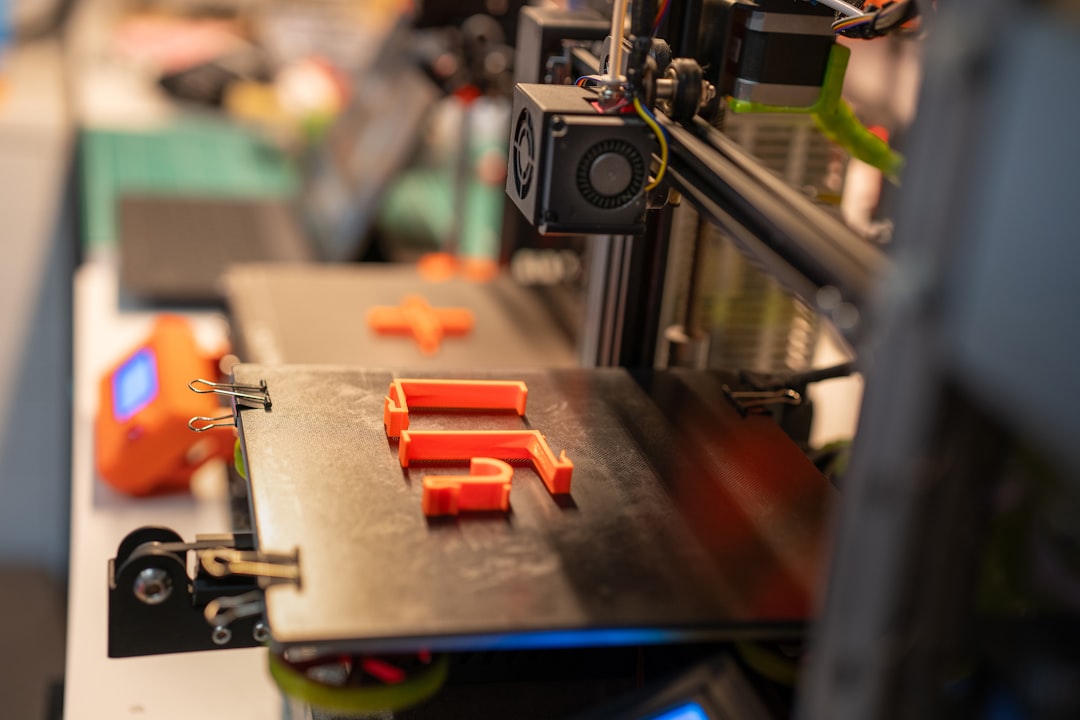Fabricating parts in a machine shop involves precision processes that transform raw materials into intricate, highly-functional components. If you’re looking to understand how this is done, here’s a quick overview:
- Fabrication includes cutting, bending, and assembling metal.
- Machining focuses on shaping parts with tools like mills and lathes.
- CNC precision machining automates these processes for accuracy.
- Precision machined parts ensure high-quality, reliable components.
Fabricating parts in a machine shop is crucial for industries requiring detailed and durable components. Whether it’s cutting, bending, or assembling metal, the goal is to create parts that meet specific requirements. Techniques like CNC precision machining take this a step further, automating the process to achieve exceptional accuracy and repeatability. This ensures that the precision machined parts are not only high quality but also consistent and reliable, meeting the needs of demanding applications.
Picture yourself needing high-quality lathe parts for your industrial machinery. Understanding these fabrication processes can make all the difference in finding a reliable supplier and ensuring your machines run smoothly and efficiently.

Essential fabricating parts in a machine shop terms:
– machine shop fabrication
– machines in a workshop
– what machines do you need for a fabrication shop
Understanding Fabrication in a Machine Shop
What is Fabrication in a Machine Shop?
Fabrication in a machine shop is the art of creating parts and components from raw materials. This process involves several key techniques:
-
Cutting: This is the first step, where raw material is separated into specific shapes and sizes. Techniques like laser cutting, waterjet cutting, and plasma cutting offer different levels of precision and efficiency. For example, laser cutting provides highly accurate cuts with minimal waste.
-
Bending: Using machines like press brakes, materials are reshaped into desired forms without breaking. This is crucial for creating angles and curves in metal sheets, which are often needed in custom parts and assemblies.
-
Welding: Welding joins two or more pieces of material by melting them together using heat and pressure. Techniques like MIG, TIG, and stick welding are used depending on the material and requirements. This creates a strong bond essential for robust structures.
-
Assembly: This involves putting together various fabricated components to create a complete product. Fasteners, adhesives, and other joining methods are often used in this stage to ensure all parts fit together correctly.
-
CNC Machining: CNC (Computer Numerical Control) machining automates the cutting, drilling, and shaping processes. This ensures precision, accuracy, and repeatability. Techniques like CNC milling and CNC turning allow for the creation of intricate and precise parts.
Difference Between a Machine Shop and a Fabricator
Understanding the difference between a machine shop and a fabricator is essential for anyone involved in manufacturing.
-
Machine Shops: These focus on machining processes, where material is removed from a solid piece to create parts. They use tools like mills, lathes, and drills. CNC precision machining is a significant part of their operations, providing high accuracy and tight tolerances. Machine shops often handle metals, plastics, and ceramics.
-
Fabricators: Fabricators, on the other hand, focus on forming and joining materials to create components. They use techniques like cutting, bending, and welding to build parts from plates and formed materials. Fabrication is often used for creating metal structures and components.
A key difference lies in the starting material and the end process. While machinists start with solid bars or plates and remove material to shape parts, fabricators start with sheets or formed materials and add or reshape them to create the final product.

Key Techniques and Materials
-
Materials: Both machinists and fabricators work with various materials, including metals like steel, aluminum, and titanium, as well as plastics and composites. Each material has unique properties that make it suitable for different applications.
-
Processes: In a machine shop, processes like turning, milling, and drilling are common. Fabricators often use cutting, bending, and welding techniques.
For instance, a fabricator might use plasma cutting to create a specific shape from a metal sheet, then employ TIG welding to join multiple pieces together. A machinist, however, might take a solid metal bar and use a CNC lathe to turn it into a precise component with tight tolerances.
Role of CNC Precision Machining
CNC precision machining is a game-changer in both machining and fabrication. It automates processes, ensuring high accuracy and repeatability. This is crucial for creating intricate parts that need to meet stringent specifications.
For example, a CNC mill can create complex geometries that would be challenging to achieve manually. This makes CNC precision machining ideal for industries like aerospace, automotive, and electronics, where high precision is non-negotiable.
In conclusion, fabricating parts in a machine shop involves a blend of traditional techniques and modern technology. Understanding the roles of machining and fabrication, as well as the materials and processes involved, is key to mastering this art.
Up next, we’ll dive deeper into the key processes in fabricating parts in a machine shop, including detailed looks at cutting, bending, and welding techniques.
Key Processes in Fabricating Parts in a Machine Shop
Fabricating parts in a machine shop involves several key processes. Let’s explore some of the most crucial techniques: cutting, bending, welding, and CNC machining.
Cutting Techniques
Cutting is the first step in the fabrication process. It involves dividing raw materials into desired shapes and sizes. There are various cutting techniques used in machine shops:
- Laser Cutting: This technique uses a focused laser beam to melt, burn, or vaporize material. It’s known for its high precision and can achieve tolerances within .001 of an inch, making it ideal for intricate designs.
- Waterjet Cutting: A high-pressure stream of water mixed with an abrasive substance is used to cut materials. Waterjets are versatile and can cut a wide range of materials, including metals, composites, and even glass.
- Plasma Cutting: Plasma cutting uses an accelerated jet of hot plasma to cut through electrically conductive materials like steel, aluminum, and copper. It’s fast and cost-effective, making it popular in many fabrication shops.
- CNC Sawing: Computer Numerical Control (CNC) sawing automates the cutting process, ensuring precision and consistency. It’s often used for cutting large volumes of material quickly.
Bending Techniques
Bending is the process of deforming material to create angles and curves. This is essential for creating parts with complex geometries.
- Press Brake: A press brake is a machine that applies force to a sheet of metal, causing it to bend at a desired angle. Mechanical brakes are used for lower tonnage requirements, while hydraulic press brakes handle higher tonnage, especially for thick materials.
- Precision Bending: Advanced techniques and equipment allow for precise control over the bending process. This ensures that parts meet exact specifications and fit together perfectly in assemblies.
- Complex Geometries: Bending can create intricate shapes required for specific applications, providing the flexibility and durability needed for various industrial machinery and structures.
Welding Techniques
Welding is the process of joining two or more pieces of metal to create a strong and seamless bond. It’s crucial for fabricating large structures and assemblies.
- MIG Welding: Metal Inert Gas (MIG) welding uses a continuous wire feed to create a weld. It’s fast and efficient, making it ideal for large-scale projects.
- TIG Welding: Tungsten Inert Gas (TIG) welding uses a tungsten electrode to produce a weld. It’s known for its precision and is often used for thin materials and intricate welds.
- Stick Welding: Also known as Shielded Metal Arc Welding (SMAW), stick welding uses a consumable electrode coated in flux. It’s versatile and can be used in various environments, including outdoors.
- AWS and CWB Standards: Welders must adhere to standards set by organizations like the American Welding Society (AWS) and the Canadian Welding Bureau (CWB) to ensure the quality and safety of their work.

CNC Machining
CNC machining is a game-changer in fabrication, automating processes like cutting, drilling, and shaping to ensure precision and repeatability.
- CNC Milling: This process uses rotary cutters to remove material from a workpiece, creating flat, contoured, or multi-dimensional shapes. It’s known for its precision, accuracy, and ability to achieve tight tolerances.
- CNC Turning: Involves rotating the workpiece while a cutting tool is brought into contact with it. This creates cylindrical or conical shapes with high precision.
- CNC Routing: Uses a high-speed rotating tool to cut and shape materials. It’s often used for creating high-performance parts and oversized specialty items.
- CNC Grinding: Uses abrasive wheels to remove small amounts of material, achieving very tight tolerances and smooth surface finishes.
These key processes form the backbone of fabricating parts in a machine shop. They ensure that components are made to exact specifications, providing the necessary quality and performance for various industrial applications.
Up next, we’ll dive deeper into CNC Precision Machining in Fabrication, exploring the different techniques and their applications.
CNC Precision Machining in Fabrication
CNC Milling
CNC Milling is a cornerstone of modern fabrication. This process uses rotary cutters to remove material from a workpiece, creating flat, contoured, or multi-dimensional shapes. The key benefits are precision, accuracy, and repeatability.
-
Precision: CNC milling can achieve tolerances within micrometers. This is crucial for industries like aerospace and medical devices, where even a tiny error can be catastrophic.
-
Accuracy: The process follows exact CAD/CAM designs, ensuring the final product matches the blueprint perfectly.
-
Repeatability: Once programmed, CNC milling machines can produce identical parts consistently, making it ideal for mass production.
Consider a scenario where a fabrication shop needed to produce intricate parts for a new line of medical devices. Using CNC milling, they were able to create complex geometries with tight tolerances, ensuring each part met stringent quality standards.
CNC Turning
CNC Turning involves rotating the workpiece while a cutting tool shapes it, ideal for creating cylindrical or conical parts.
-
Multi-axis Lathe: Modern CNC lathes can operate on multiple axes, allowing for more complex and precise designs.
-
Precision Threading: CNC turning excels at creating precise threads, essential for fasteners and other threaded components.
-
CAD/CAM Techniques: These techniques allow for the design and simulation of parts before they are physically produced, reducing errors and waste.
For instance, a company manufacturing high-precision shafts for automotive transmissions used CNC turning to achieve the exact dimensions and threading needed. This ensured a perfect fit and reliable performance.
CNC Routing
CNC Routing uses a high-speed rotating tool to cut and shape materials, often used for high-performance parts and oversized specialty items.
-
Vacuum-Secured Routing: This method secures the workpiece with a vacuum, ensuring stability and precision during the cutting process.
-
High-Performance Parts: CNC routers can create parts with intricate designs and tight tolerances, crucial for industries like aerospace.
-
Oversized Specialty Parts: CNC routing is also ideal for larger parts that require precise cutting and shaping.
Imagine a scenario where an aerospace company needed custom, oversized panels for a new aircraft. CNC routing allowed them to produce these large, complex parts with the precision required for safe and efficient operation.
CNC Grinding
CNC Grinding uses abrasive wheels to remove small amounts of material, achieving very tight tolerances and smooth surface finishes.
-
Tight Tolerances: CNC grinding can achieve tolerances within a few micrometers, essential for high-precision components.
-
Smooth Surface Finishes: This process is often used for finishing parts to ensure they meet strict quality standards.
For example, a defense contractor needed parts with extremely smooth finishes for a new radar system. CNC grinding provided the necessary precision and surface quality, ensuring the system’s reliability and performance.
These CNC precision machining techniques form the backbone of modern fabrication, enabling the production of high-quality, precise, and reliable parts for various industrial applications.
Next, we’ll explore Value-Added Services in Fabrication, diving into how additional processes improve the quality and functionality of fabricated parts.
Value-Added Services in Fabrication
Finishing Services
Finishing services are essential to ensure that fabricated parts meet both functional and aesthetic requirements. At TMC Technologies, we offer a range of finishing options:
-
Rust Proofing: This process protects metal parts from corrosion, extending their lifespan. It’s crucial for parts exposed to harsh environments.
-
Stamping and Laser Identification: These techniques add markings, such as part numbers or logos, directly onto the parts. This helps in traceability and branding.
-
Polishing: Polishing improves the surface finish of parts, making them smooth and shiny. This is particularly important for parts used in visible or high-touch areas.
-
Deburring: Removing sharp edges and burrs from parts is critical for safety and functionality. Deburring ensures that parts fit together smoothly and reduces the risk of injury during handling.
-
Assembly: Our skilled workers handle everything from installing bushings and screws to wiring electrical components. This ensures that parts are ready for immediate use upon delivery.
Quality Assurance
At TMC Technologies, quality assurance is not just a step; it’s a commitment. We adhere to ISO 9001:2015 standards, ensuring that every part meets stringent quality criteria.
-
Inspection Reports and Quality Packages: We provide detailed inspection reports and quality packages upon request. Some customers are satisfied with a simple green quality tag, while others require comprehensive documentation.
-
Final Inspection: Before any part leaves our facility, it undergoes a thorough final inspection. Our QA team checks each part carefully, ensuring it meets all specifications.
-
Prototyping and Engineering CAD/CAM: Prototyping allows us to create and test parts before full-scale production. Using advanced CAD/CAM software, we can design, simulate, and refine parts, minimizing errors and waste.
-
Staging and Subcontractor Availability: We coordinate with subcontractors for specialized tasks and stage parts efficiently to streamline the production process.
Consider a case where a customer required a custom assembly with tight tolerances and specific surface finishes. By leveraging our comprehensive finishing services and rigorous quality assurance processes, we delivered parts that exceeded expectations, ready for immediate integration into their systems.
Next, we’ll address Frequently Asked Questions about Fabricating Parts in a Machine Shop, providing insights into common queries and clarifying the distinctions between machining and fabrication.
Frequently Asked Questions about Fabricating Parts in a Machine Shop
What is the Difference Between CNC Machining and Fabrication?
CNC machining and fabrication are both crucial in manufacturing, but they serve different purposes.
-
CNC Machining: This process involves removing material from a workpiece to create a precise shape. Think of it as sculpting. Machines like CNC mills and lathes cut, drill, and shape the material with high accuracy. This is ideal for parts requiring tight tolerances and smooth finishes.
-
Fabrication: This process focuses on forming and joining materials, often starting with raw sheets or bars of metal. Techniques include cutting, bending, and welding to assemble parts into a final product. Fabrication is perfect for creating larger structures or assemblies.
What is Done in a Fabrication Shop?
A fabrication shop transforms raw materials into finished parts through several key processes:
-
Cutting: Using tools like laser cutters, waterjet cutters, or plasma cutters to slice materials into specific shapes and sizes.
-
Stamping and Punching: Creating holes, slots, or specific shapes in the material using a punch and die set.
-
Forming: Bending and shaping materials using press brakes or other bending machines to achieve the desired geometry.
-
Assembly: Putting together various fabricated components using fasteners or welding to create the final product.
Materials often used include mild steel, stainless steel, and aluminum.
What is the Role of Metal Fabrication in Industrial Machine Shops?
Metal fabrication plays a critical role in industrial machine shops, enabling the creation of custom components and structures for various applications.
-
Custom Components: Fabrication allows for the production of unique, custom parts that meet specific needs. This is essential for industries like automotive, aerospace, and electronics.
-
Structures: Large frameworks or assemblies, such as metal frames for machinery or support structures, are fabricated to precise specifications.
-
Cutting, Bending, and Welding: These core techniques ensure that each component fits perfectly and functions as intended. For example, welding joins parts together to form a strong, cohesive structure.
In industrial settings, fabricated parts are often used in complex assemblies that require high precision and durability.
Next, we’ll dive deeper into the specific processes involved in CNC Precision Machining in Fabrication, highlighting how advanced techniques like CNC milling and turning contribute to high-quality parts.
Conclusion
At TMC Technologies, we pride ourselves on being a top-tier CNC machine shop dedicated to delivering high-quality CNC lathe parts and custom applications. Our facility in Carroll, Iowa is equipped with state-of-the-art technology and staffed by a team of experts committed to precision and reliability.
Why Choose TMC Technologies?
-
Expertise and Precision: Our team excels in CNC precision machining, ensuring every part we produce meets stringent quality standards. Whether it’s complex aerospace components or intricate medical devices, we deliver unparalleled accuracy.
-
Custom Applications: We understand that every project is unique. That’s why we work closely with you from the initial design phase through to the final product, ensuring every detail is perfect. Our collaborative approach allows us to create solutions that are both high-quality and highly functional.
-
Versatility: Our advanced CNC technology allows us to work with a variety of materials, including metals and high-temperature plastics. This versatility ensures we can meet the diverse needs of our clients, regardless of their industry.
Our Commitment to Quality
At TMC Technologies, quality is not just a promise—it’s a guarantee. We adhere to ISO 9001:2015 standards, ensuring that our processes are efficient and our products are reliable. Our in-house value-added services, such as engineering CAD/CAM files, prototyping, and finishing services, further improve the quality and functionality of the parts we produce.
Serving a Wide Range of Industries
Our expertise extends across various sectors, including military, defense, chemical processing, marine, and petrochemical industries. We also serve the agriculture and forestry sectors, providing dependable components for vital machinery.
Partner with Us
By choosing TMC Technologies, you’re partnering with a team that values precision, quality, and customer satisfaction. We’re here to help you achieve your fabrication goals, whether you need custom lathe parts or comprehensive machining solutions.
For more information about our services and how we can help you achieve your fabrication goals, visit our CNC Metal Fabrication page. Let’s shape the future of manufacturing together.
Thank you for considering TMC Technologies for your CNC machining and fabrication needs. We look forward to working with you to create high-quality, precision parts that meet your exact specifications.
